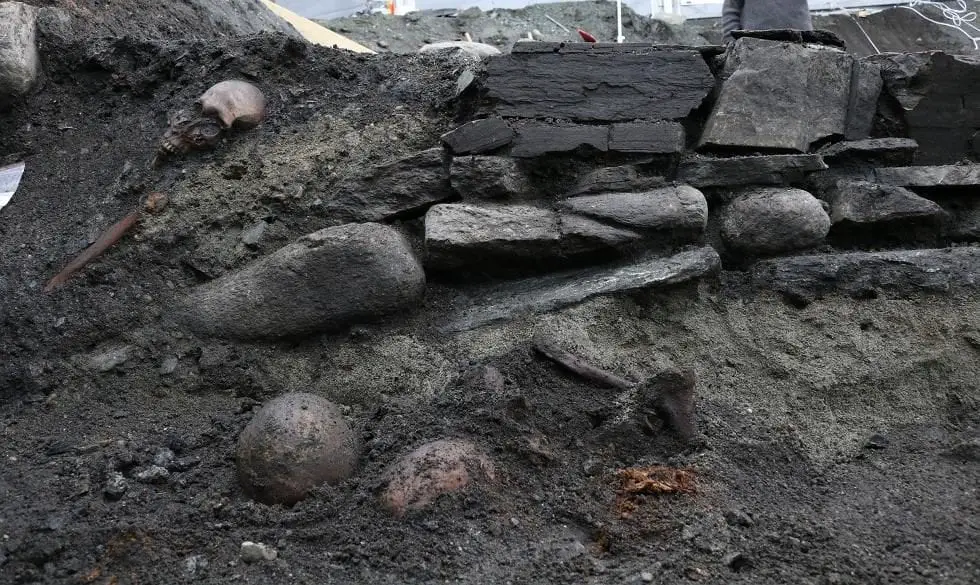Archaeologists in Norway claim to have discovered a church where the Viking King, Olaf Haraldsson was first enshrined as a saint.
Archaeologists working on a site near Trondheim have unearthed the foundations of a wooden stave church and the alter where Olaf may have been enshrined immediately after being declared a saint. The discovery gives credibility to Norse saga accounts surrounding important events of that era.
Director of the project, Anna Petersén said “This is a unique site in Norwegian history in terms of religion, culture and politics. Much of the Norwegian national identity has been established on the cult of sainthood surrounding St. Olaf, and it was here it all began!”
Olaf II Haraldsson, later known as St. Olaf, was King of Norway from 1015 to 1028 till his death in the Battle of Stiklestad. His younger half-brother, Harald Hardrada, was also present at the battle who also became King of Norway in 1047, only to die in a failed invasion of England at the Battle of Stamford Bridge in 1066.

In his Chronicle of the Kings of Norway, the medieval Icelandic historian Snorri stated that “following King Olaf Haraldsson’s martyrdom in 1030, his body was buried in Trondheim, or Nidaros” (as it was known) and that the local populus soon reported portents and miracles attributed to the martyred king. A year after his death, Olaf’s coffin was dug up and opened in the presence of the bishop, revealing his miraculously well-preserved body. He was immediately declared a saint by popular acclaim and his body was enshrined above the high altar in the royal church of St. Clement’s church before being moved to the Cathedral some years later.
St. Clement’s church discovered
Archaeologists working for the Norwegian Institute for Cultural Heritage Research (NIKU) have recently uncovered the stone foundations for a wooden stave church which they believe is the actual ruin of St. Clement’s Church from the dating evidence. Dating evidence and a study of the ruins places its construction at the time Olaf ruled.
During its excavation, the archaeologists uncovered a small rectangular stone-built platform at the building’s east end which is probably the foundation for an altar – probably the very same altar on which St. Olaf’s coffin was placed in 1031. In addition, a small well was also discovered which may be a holy well connected with the saint.







